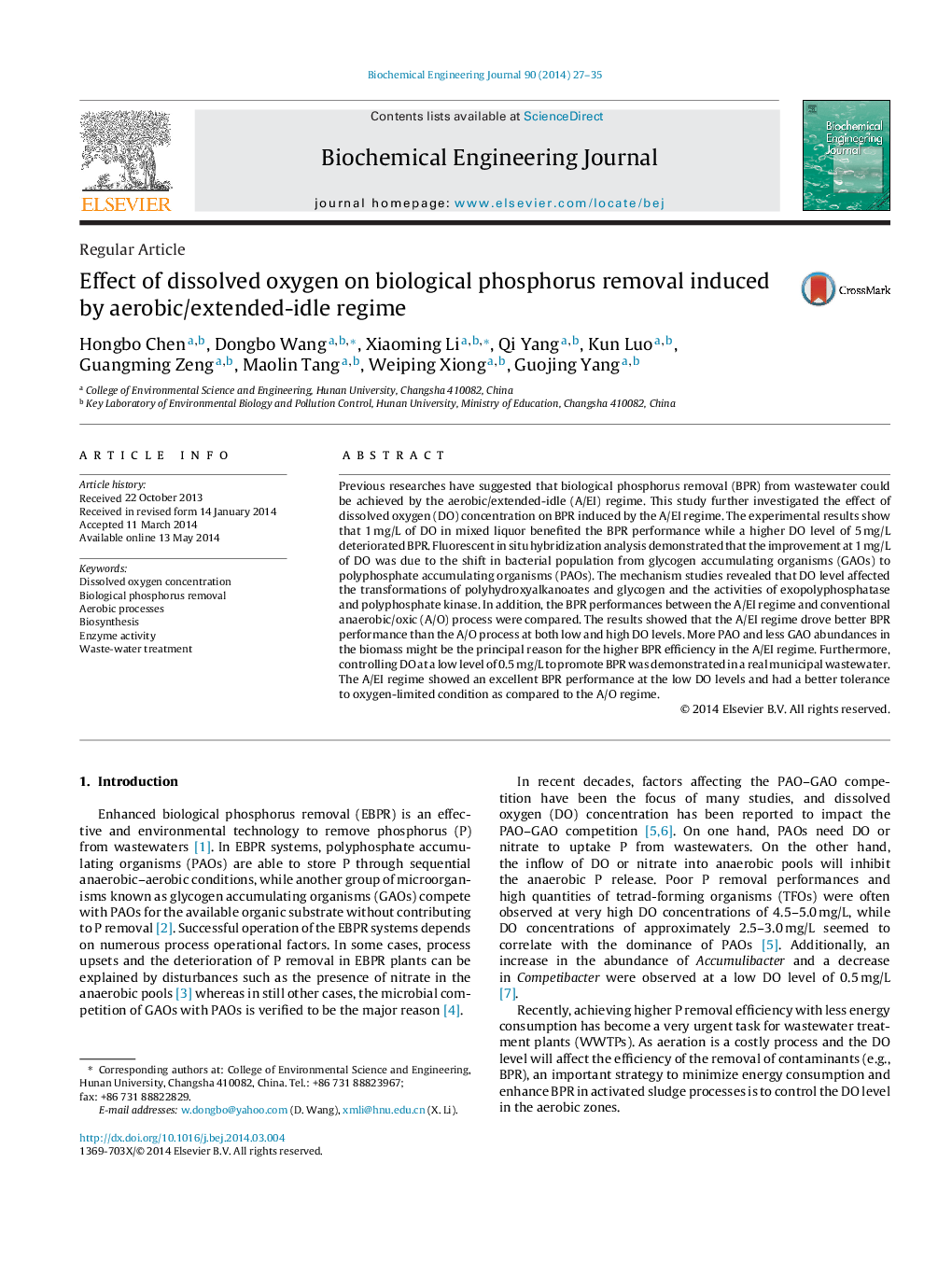| کد مقاله | کد نشریه | سال انتشار | مقاله انگلیسی | نسخه تمام متن |
|---|---|---|---|---|
| 2990 | 147 | 2014 | 9 صفحه PDF | دانلود رایگان |
• Low DO level was demonstrated to improve BPR in A/EI regime.
• DO concentration could affect PPX and PPK activities.
• The biomass cultured at low DO level contained more PAOs and less GAOs.
• A/EI regime drove better BPR than A/O process at both high and low DO levels.
• A/EI regime had a better tolerance to oxygen-limited condition than A/O process.
Previous researches have suggested that biological phosphorus removal (BPR) from wastewater could be achieved by the aerobic/extended-idle (A/EI) regime. This study further investigated the effect of dissolved oxygen (DO) concentration on BPR induced by the A/EI regime. The experimental results show that 1 mg/L of DO in mixed liquor benefited the BPR performance while a higher DO level of 5 mg/L deteriorated BPR. Fluorescent in situ hybridization analysis demonstrated that the improvement at 1 mg/L of DO was due to the shift in bacterial population from glycogen accumulating organisms (GAOs) to polyphosphate accumulating organisms (PAOs). The mechanism studies revealed that DO level affected the transformations of polyhydroxyalkanoates and glycogen and the activities of exopolyphosphatase and polyphosphate kinase. In addition, the BPR performances between the A/EI regime and conventional anaerobic/oxic (A/O) process were compared. The results showed that the A/EI regime drove better BPR performance than the A/O process at both low and high DO levels. More PAO and less GAO abundances in the biomass might be the principal reason for the higher BPR efficiency in the A/EI regime. Furthermore, controlling DO at a low level of 0.5 mg/L to promote BPR was demonstrated in a real municipal wastewater. The A/EI regime showed an excellent BPR performance at the low DO levels and had a better tolerance to oxygen-limited condition as compared to the A/O regime.
This paper showed that the aerobic/extended-idle (A/EI) regime drove superior biological phosphorus removal than the conventional anaerobic/oxic (A/O) process at low DO level.Figure optionsDownload as PowerPoint slide
Journal: Biochemical Engineering Journal - Volume 90, 15 September 2014, Pages 27–35
